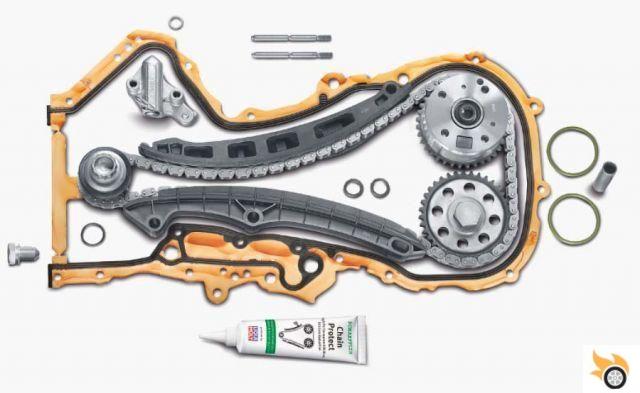
Introduction
The timing system is a fundamental part of a vehicle's internal combustion engine. It is responsible for synchronizing the movement of the intake and exhaust valves with the movement of the piston, thus allowing gases to enter and exit the combustion chambers. To ensure optimal operation and avoid serious problems, it is necessary to perform proper maintenance of the distribution system. In this article, we will answer the most common questions about how to perform maintenance, its importance, and what care it requires.
How to carry out the maintenance of the distribution system?
The maintenance of the distribution system must be carried out by a specialized mechanic, since it requires technical knowledge and specific tools. The following are the general steps that are followed during maintenance:
1. Visual inspection
The first step is to perform a visual inspection of the distribution system. The distribution belts or chains are checked, as well as the tensioners and guides. If any wear, cracks or signs of deterioration are detected, it is necessary to replace the affected parts.
2. Tension adjustment
It is important that the tension of the timing belts or chains is adequate. Too much tension can lead to premature wear, while too little tension can cause tooth skipping and engine damage. During maintenance, the tension is adjusted according to the manufacturer's specifications.
3. Replacement of parts
In some cases, it is necessary to replace the timing belts or chains, as well as the tensioners and guides. These parts have a limited useful life and their preventive replacement is essential to avoid serious failures. The mechanic will determine if the change is necessary during maintenance.
4. Valve timing
Once the previous steps have been completed, it is necessary to synchronize the intake and exhaust valves with the movement of the piston. This is accomplished by adjusting the camshafts and checking that the timing marks are aligned correctly. Incorrect timing can cause serious engine damage.
Importance of distribution system maintenance
Proper timing system maintenance is crucial to ensure proper engine operation and prevent costly breakdowns. Here are some of the reasons why maintenance is so important:
1. Prevents engine damage
A faulty timing system can cause serious engine damage. If the valves and pistons are not timed correctly, they can collide, resulting in a costly breakdown. Regular maintenance helps prevent these types of problems.
2. Improves performance
A timing system in good condition ensures optimum engine performance. The valves open and close at the right time, allowing for efficient combustion and increased power. Additionally, proper maintenance can help prevent loss of power due to worn timing belts or chains.
3. Increases engine life
Regular maintenance of the timing system helps to prolong the life of the engine. By preventing serious breakdowns, the need for costly repairs or even complete engine replacement is avoided. A well-maintained engine can last for many more years.
Maintenance tips for the distribution system
In addition to following the manufacturer's recommendations and performing maintenance at a specialized workshop, there are some additional tips that can help keep the distribution system in good condition:
1. Changing timing belts or chains
It is important to follow the manufacturer's recommendations regarding the interval for changing timing belts or chains. These parts have a limited useful life and their preventive replacement is essential to avoid serious failures.
2. Use of quality lubricants
Using quality lubricants is essential to ensure proper functioning of the distribution system. Appropriate lubricants reduce friction and wear on parts, prolonging their useful life.
3. Avoid sudden accelerations
Sudden accelerations can put additional stress on the distribution system. Trying to accelerate progressively and avoiding sudden changes in speed can help reduce wear and extend the life of the system.
Frequent questions
1. What is the useful life of timing belts or chains?
The useful life of timing belts or chains may vary depending on the manufacturer and model of the vehicle. In general, timing belts are recommended to be replaced every 80.000 to 100.000 miles or every 5 years, while timing chains typically have a longer life and do not require preventative replacement.
2. What happens if the distribution system is not maintained?
If proper timing system maintenance is not performed, serious engine failure can occur. Valves and pistons can collide, causing costly damage. Also, a poor timing system can affect engine performance and shorten its life.
Conclusion
Proper timing system maintenance is essential to ensure proper engine operation and prevent costly breakdowns. By following the manufacturer's recommendations, carrying out maintenance in a specialized workshop and taking into account some additional advice, you can prolong the useful life of the system and enjoy an engine in optimal conditions. Do not forget that preventive maintenance is always cheaper than corrective repairs. Take care of your distribution system and keep your engine in good condition!
We hope this article has been helpful and has answered your questions about distribution system maintenance. If you have any other questions or comments, feel free to leave them below. We would love to hear your opinion!
Until next time!
The Pistonudos.com team


























